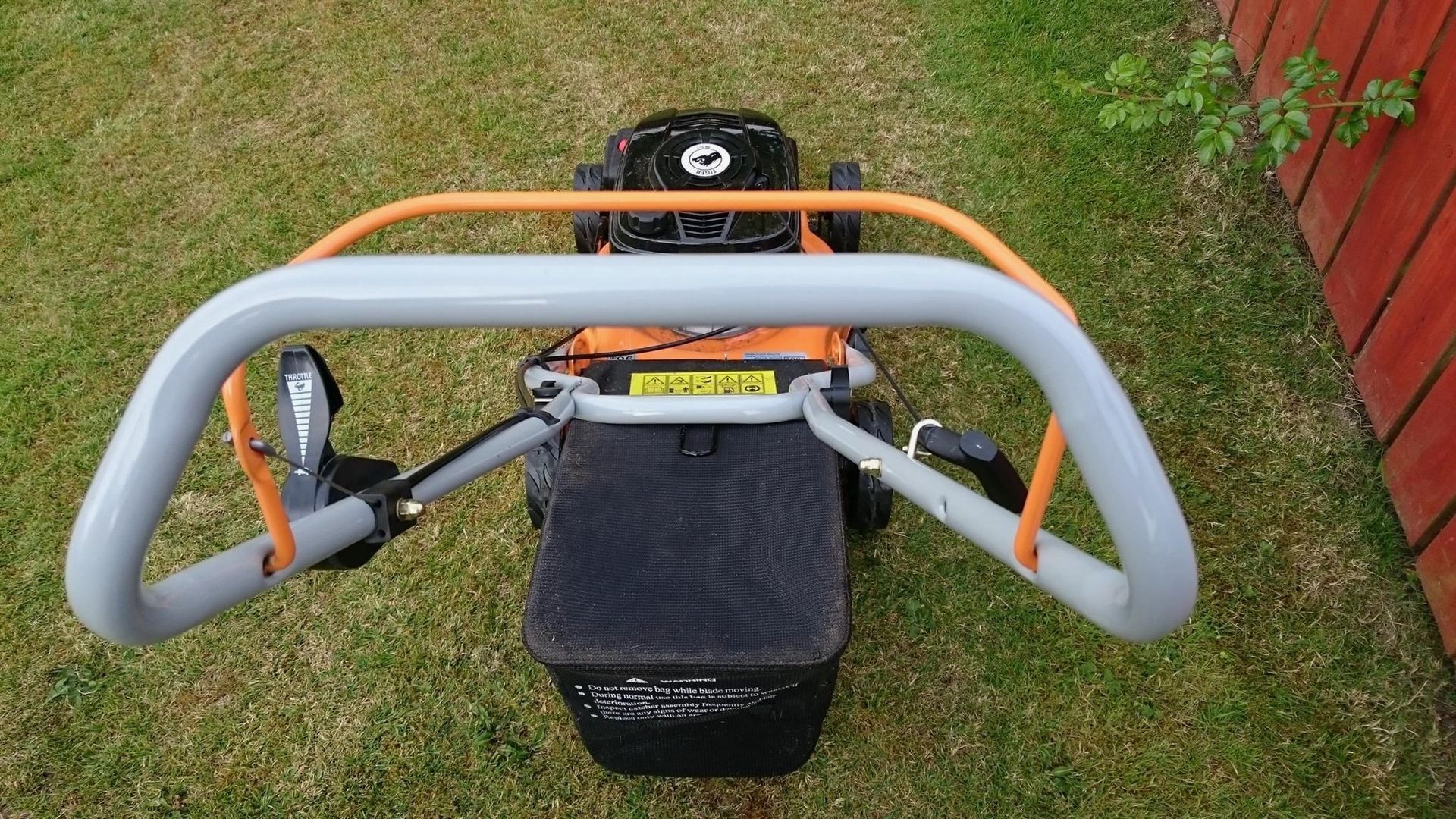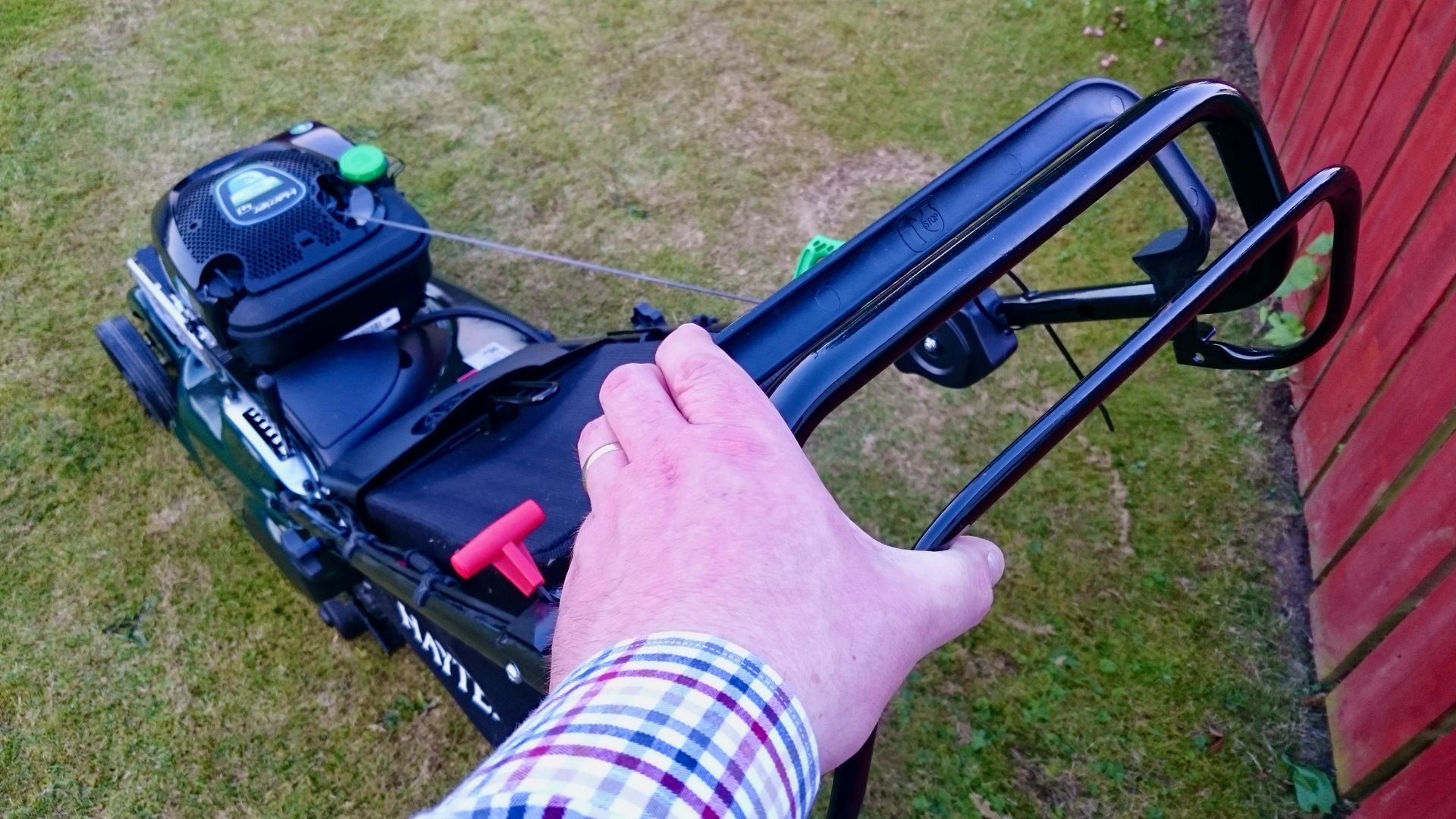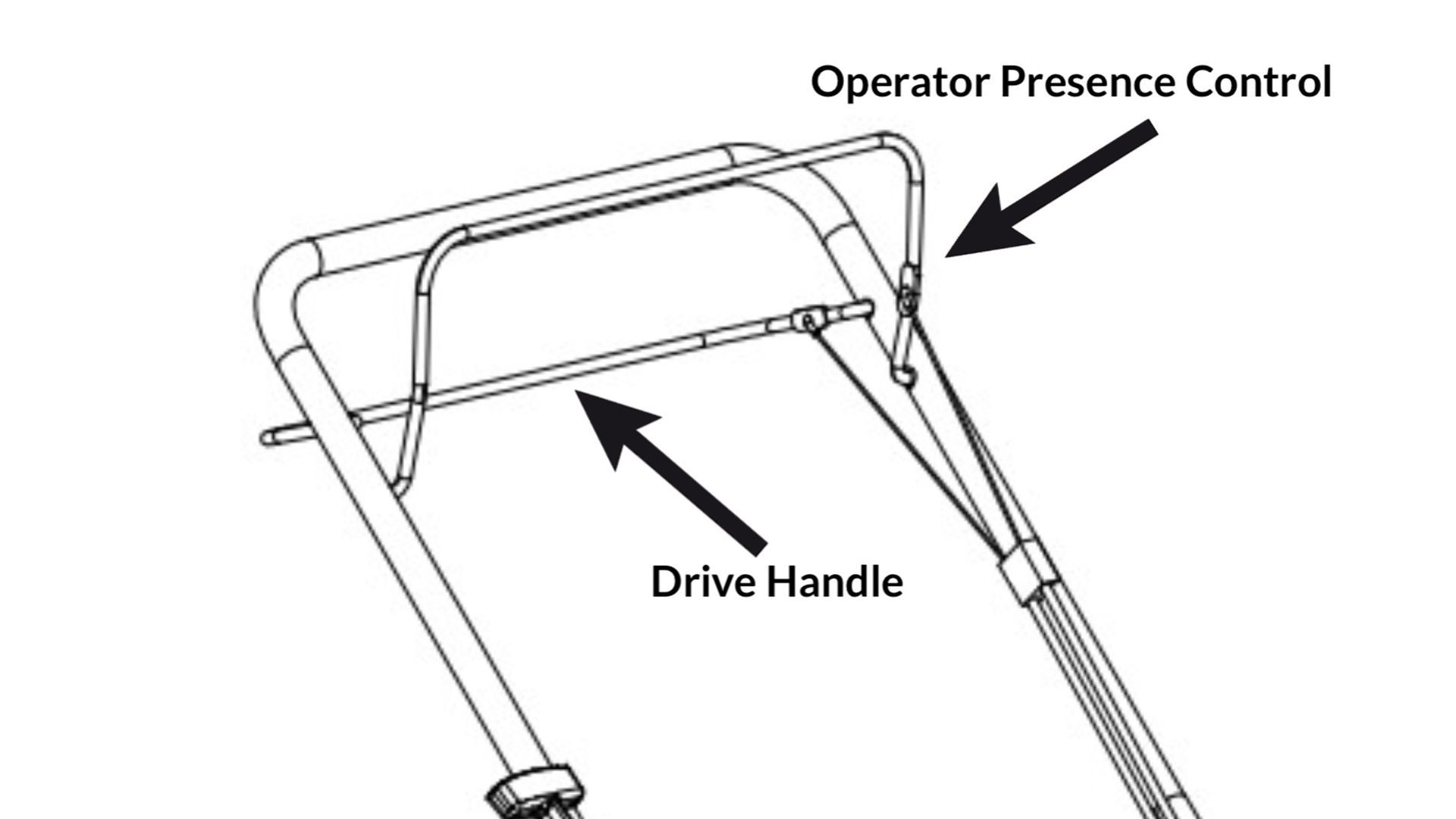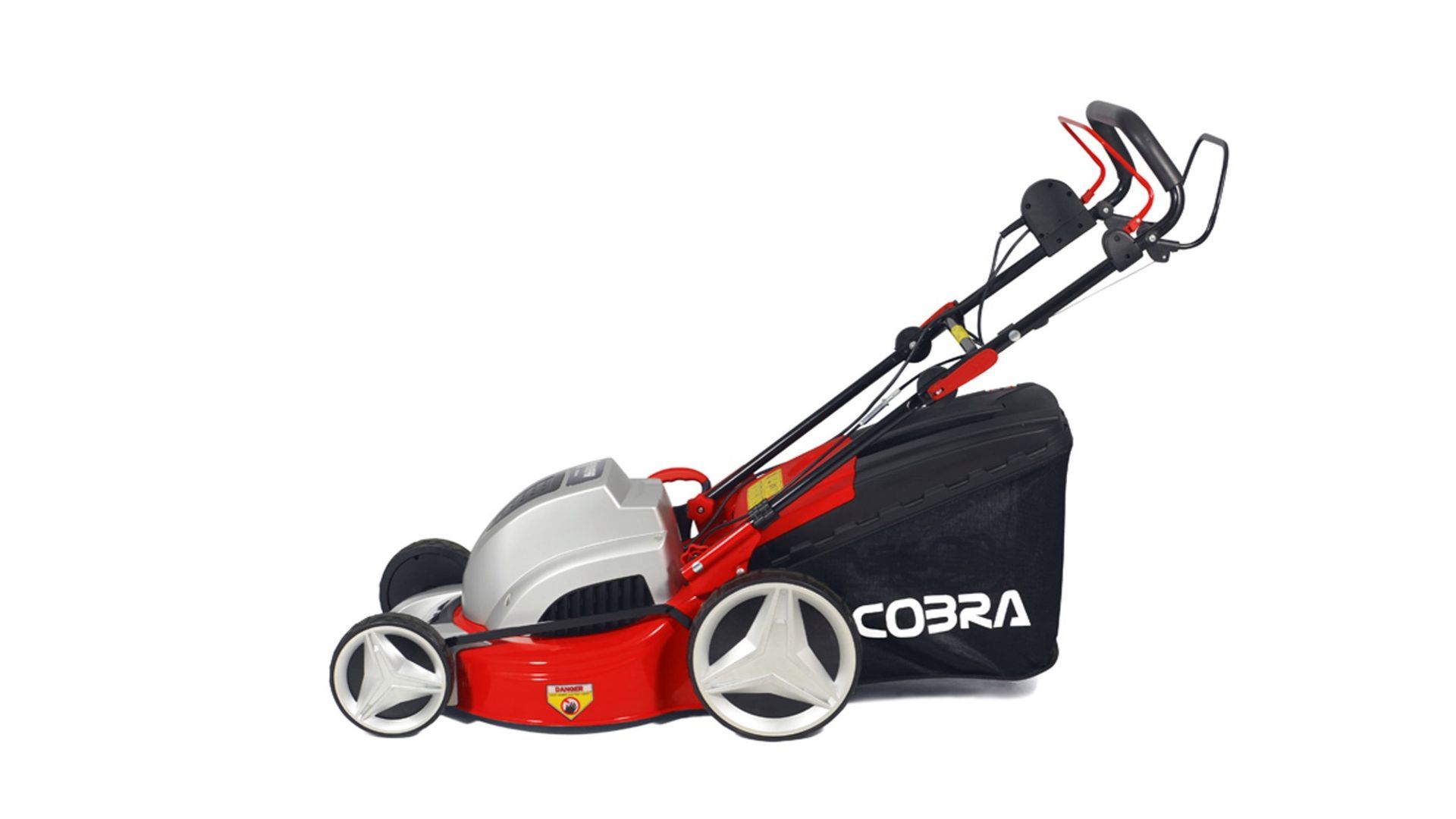*Important Information: As an audience supported website, if you purchase an item after clicking an external link or advertisement marked with an asterisk (*) on this website, we may receive a commission. This does not change the price you pay.
Self-propelled mowers are more popular than ever before. Image Credit: Ultraskrip
Propulsion
Today, you can choose between push mowers and self-propelled mowers, which require different levels of operator input and assistance.
Whilst self-propelled mowers are more popular than ever before, there are specific circumstances in which a push mower will prove preferable.
Self-propelled mowers are more popular than ever before. Image Credit: Ultraskrip
Push Mowers
As the name suggests a push mower - also known as a hand-propelled mower - is pushed across the lawn by the operator. With the exception of hand mowers, cutting power is provided by either an electric motor, or petrol engine. This arrangement provides direct operator control, making push mowers particularly effective for use on small lawns and in confined spaces, where frequent turning or changes of direction are required.
Advantages of a Push Mower
Whilst self-propelled mowers remain especially popular, there are good reasons why a significant proportion of British gardeners continue to choose a push mower:
- Cost. They typically cost less to purchase than a comparable self-propelled alternative;
- Simplicity. Because the engine only provides cutting power, push mowers are usually simpler to service and to maintain;
- Weight. Typically lighter in construction, they are easier to manoeuvre, particularly in tight or irregular spaces;
- Choice for smaller lawns. A wide range of models and designs is available – especially for use on small and mid-size gardens;
- Efficiency. You can expect a push mower to consume less fuel / energy than a self-propelled mower, since the engine / motor does not have to provide motive power;
- Control. Unlike a fixed speed, self-propelled mower, you have full control over the speed of the machine – allowing you to increase speed when cutting areas of lighter growth and conversely, to slow down when tackling areas of heavier growth.
Disadvantages of a Push Mower
Whilst hand-propelled mowers are well suited to many UK lawns, they do have their downsides:
- Effort. Push mowers require more operator effort than a self-propelled model, making them less well suited to larger and sloping lawns;
- Larger lawns. The choice of push mowers for larger lawns is limited.

With a single operating bail, this Tiger TM4016HP mower is clearly a hand propelled model. Image Credit: Author

With twin operating bails, this Hayter Harrier 41 machine with Autodrive is obviously a self-propelled model.
Image Credit: Author
Self-Propelled Mowers
Self-propelled mowers use an engine or electric motor to provide both motive and cutting power. The operator simply walks behind the mower and directs it across the lawn.
Self-propelled mowers are the most popular type of petrol mowers on sale in the UK today. They represent a growing proportion of cordless, battery powered mower sales too. Whilst corded electric self-propelled mowers have historically been something of a rarity, UK garden machinery specialist Henton & Chattell's Cobra brand, does today offer an 18" self-propelled corded model.
This clever 46cm Cobra MX46SPE machine combines self-propulsion with mains electric power. Image Credit: Henton & Chattell / Cobra

General arrangement of operating bails on a self-propelled lawnmower.
Image Credit:
Author
Advantages of a Self-Propelled Mower
The key benefit of a self-propelled mower is the elimination of much of the effort and energy that’s required when using a push or hand mower. This makes self-propelled mowers, the mower of choice for larger lawns, or gardens which feature gentle inclines.
- Reduced effort. Self-propelled mowers eliminate much of the effort required to the mower;
- Consistency. Most self-propelled mowers operate at a predetermined speed, which helps provide a more consistent cut;
- Choice of models for larger lawns. A wide range of self-propelled mowers is available – especially for medium, large and very large lawns.
Disadvantages of a Self-Propelled Mower
- Weight. Self-propelled mowers are generally heavier than push mowers – so even if they require less effort on the lawn, they will require more effort off it;
- Energy consumption. As the engine or motor must drive the machine as well as power the cutting mechanism, a self-propelled mower will consume more fuel / energy than a push mower;
- Turning a self-propelled mower with the drive mechanism engaged will prove more difficult than manoeuvring a push mower. You may find yourself ‘fighting’ against the power of the machine when changing direction, which dependent upon grass conditions, can sometimes leave wheel marks on the lawn;
- Price. A self-propelled mower will often prove more expensive to purchase than a push-mower – and may also prove more complex and expensive to service and to maintain.
The Need for Speed
More affordable self-propelled mowers are typically equipped with a single speed drive – typically equivalent to a gentle, walking pace.
However, there are occasions you may wish to quicken or lessen the machine’s pace e.g. when cutting very dense or very light areas of growth. In response, manufacturers have developed several solutions to provide you with greater control over machine speed.
- Multi speed systems allow you to adjust the machine’s speed from 2 or more pre-selected options;
- Variable Speed systems allow you to increase and decrease speed according to grass conditions, typically by adjusting pressure on the operating bar / bail;
- Automatic systems feature a sensor in the machine which monitors your walking pace across the lawn. If you walk faster; the pace of the machine increases. Conversely, if you walk slower, the speed of the machine reduces.
For most domestic lawns, a single speed machine will prove more than adequate. However, if you find yourself regularly encountering variable grass and ground conditions, then you’ll almost certainly welcome the additional flexibility and control, a variable or multi-speed system offers.
Summary
When it comes to choosing a mower, you’ll have to choose between purchasing a self-propelled machine or buying a push machine.
- If you have a smaller garden, or a garden characterised by an irregular design, in most instances a push mower will prove ideal;
- If your lawn is larger or features a gentle slope, a self-propelled machine may prove a better buy;
- If you’re tasked with maintaining more than one lawn or you must contend with variable grass conditions, it’s worth considering a self-propelled machine, with adjustable speed control.
Prior to purchasing a self-propelled mower, it’s always a good idea to try the mower, to get a feel for its performance. In times past, the author has experienced a small number of self-propelled machines, whose performance can only be described as underwhelming. Many independent garden machinery specialists will happily allow you to try before you buy om their premises.

